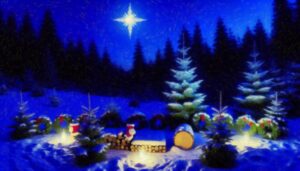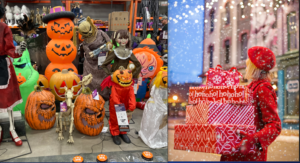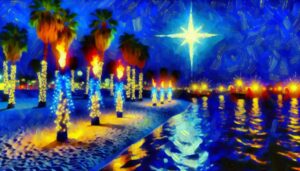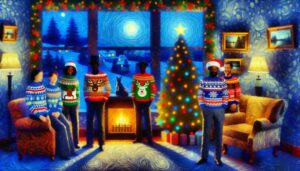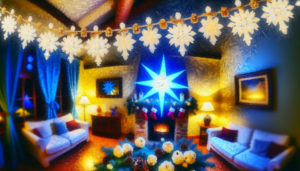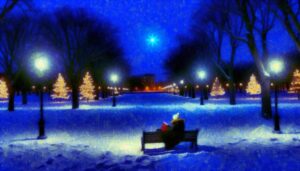Believe it or not, Boston, yes, bustling, festive Boston, once banned Christmas way back in 1659! Back then, the Puritans, who led the city, weren’t fond of the holiday, claiming it had pagan origins and lacked biblical approval. Imagine walking through Boston’s streets, expected to be as quiet and regular as any other day, no festive cheer or gift exchanges. They were serious about it, too, making celebrating Christmas a criminal offense! It wasn’t until 1681 that this ban was lifted, allowing Christmas to gradually transform into the beloved season of joy and giving familiar to us today. Isn’t it curious how times change? Stick around to find out just how this dramatic shift happened!
Puritan Opposition to Christmas
In 1659, Puritans in Boston banned Christmas, viewing it as a holiday with pagan origins and no biblical justification. You’d find this surprising, but in Puritan New England, particularly the Massachusetts Bay Colony, the celebration of Christmas was a no-go.
The General Court was pretty stern, making celebrating this festive day a criminal offense. Imagine walking through Boston streets, shops bustling, kids in school, but churches? They were closed tight as a drum.
Puritans held a tight grip on religious services and the social hierarchy, so Christmas, with its cheerful and social nature, didn’t fit their bill. It’s interesting to note that figures like Increase Mather, a Puritan leader, argued vehemently against Christmas observance, emphasizing its lack of scriptural backing.
Yet, despite their efforts, King Charles II would later change the game by reinstating Christmas as a recognized holiday. This shift didn’t just happen overnight but marked a significant turn in the tide, reflecting broader changes in society and religious practices.
Social Impact of Banning Christmas

The ban on Christmas reshaped social norms and public behaviors in Boston, emphasizing a culture deeply rooted in Puritan values of order and industriousness. You’d find the streets quieter during what was once a raucous holiday season. Instead of festive gatherings, folks focused on their daily chores, reflecting the Puritan emphasis on hard work over holiday cheer.
Governor Bradford was quite stern about maintaining order. He wasn’t just about giving speeches; he actively enforced the ban by confiscating equipment used for Christmas celebrations. Imagine walking into a town meeting to find your festive gear displayed as a warning to others!
This strict enforcement not only curbed drunkenness and disorder but also set a precedent for a unique New England way of life that valued sobriety and industry above all. Here’s a glimpse of the changes:
| Aspect | Before the Ban | After the Ban |
|---|---|---|
| Public behavior | Festive, disorderly | Orderly, industrious |
| Community focus | Celebrations, leisure | Work, Puritan values |
| Law enforcement | Lax during holidays | Strict, with confiscations |
| Cultural identity | European influenced | Distinctly New England |
You’re seeing how a single law could steer the social fabric of an entire community, carving out a way of life that’s uniquely their own in Boston.
Shift in Attitude Towards Christmas

How did attitudes towards Christmas change after the ban was lifted in 1681?
You might be surprised to know that the observance of Christmas shifted dramatically. It transformed from a day of disorder to a more reverent and subdued celebration. Initially, this change was slow, as people in New England were wary of returning to old habits.
As the years rolled by, a significant transformation occurred. The recognition of Christmas began to appear on calendars and in almanacs, marking its acceptance into official life.
This wasn’t just a nod to tradition but a wholesale shift in how Christmas was perceived and celebrated. It was no longer just a day, but a season of quiet joy and reflection.
Connection Between Anti-Christmas Laws and Blue Laws

Understanding the connection between anti-Christmas laws and blue laws reveals how both sets of regulations stemmed from a common Puritan desire to enforce scriptural adherence in daily life. You might find it intriguing that both these laws weren’t just random rules but were deeply rooted in Puritan communities’ pursuit to live strictly by biblical doctrines. Let’s delve deeper.
In these communities, blue laws and anti-Christmas laws were two sides of the same coin, meticulously crafted to control behavior and guarantee that all holy days, including the Sabbath, were observed with utmost reverence and in line with scriptural practices. This wasn’t just about avoiding work; it was about dedicating these days to scriptural worship, reflecting a broad campaign to align every aspect of life with Puritan values.
Think about it; while today you might cherish a Sunday brunch or eagerly anticipate Christmas festivities, Puritans saw these modern weekend concepts as distractions from true scriptural observance. Their strict laws were a testament to their commitment to order and religious purity, shaping a society where every day, especially holy days, was a step toward greater spiritual discipline. Isn’t it fascinating how these historical regulations reflect the intense devotion of those times?
Role of Christmas in Literature and Culture
Reflecting on how Puritan values shaped societal norms, let’s explore how Christmas in literature and culture came to symbolize warmth and cherished traditions.
You see, Christmas in stories often represents the epitome of comfort and joy, rooted in family values and nostalgia. Think about the classic tales where snowy scenes and festive gatherings underscore the spirit of togetherness, reflecting a time of innocence and joy associated with childhood.
Victorian ideals further cemented this image, as they romanticized childhood and stressed the importance of domesticity. During this era, the traditional misrule of Christmas evolved into celebrations focused on home and family, promoting quieter, more dignified festivities. This shift in perception helped Christmas become a national holiday in 1870, despite lingering anti-Christmas sentiments.
In New England, especially, Christmas conjures up deep feelings of nostalgia. It’s not just about the presents under the tree; it’s about the shared moments that knit a family closer. The culture here, steeped in a history of both resistance and embrace of Christmas, showcases a unique blend where old traditions meet new meanings.
Frequently Asked Questions
What City Banned Christmas?
You’re asking about a city that banned Christmas back in the day. It was Boston, where in 1659, the local government deemed the celebration illegal, aligning with the Puritan beliefs prevalent at the time.
Why Did Boston Ban Christmas?
You’re wondering why Christmas was banned? It was because the Puritans believed it had no biblical support and was too pagan. They also wanted to avoid the disorder and excess it brought.
Who Banned Christmas in the 1600s?
Imagine a time shrouded in rigid beliefs. You’re living in the 1600s, where the Puritans, with their stern views, banned Christmas, fearing it was too pagan and not based on scripture.
In What Place Was Christmas Once Actually Banned by the Puritans?
You might find it surprising, but the Puritans once banned Christmas in the Massachusetts Bay Colony. They believed it had pagan origins and lacked biblical support, leading to a ban lasting over two decades.

